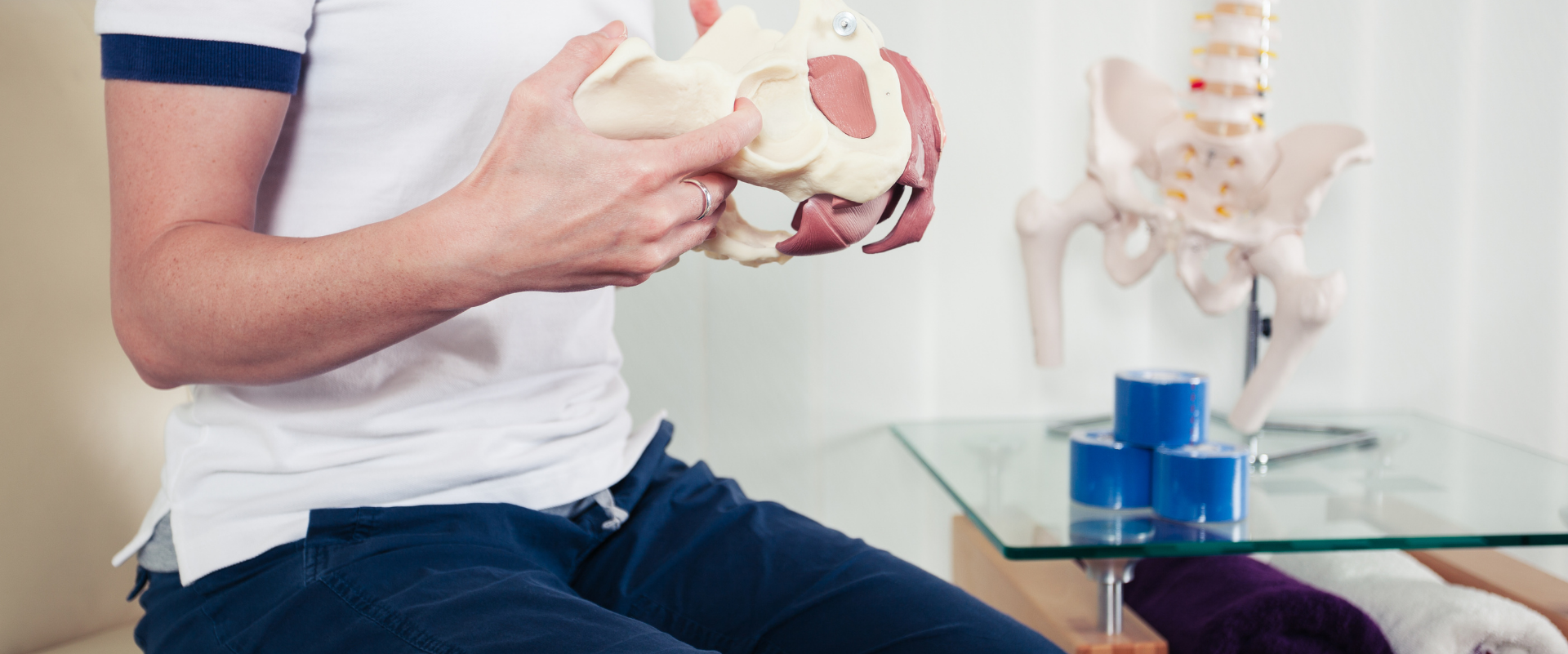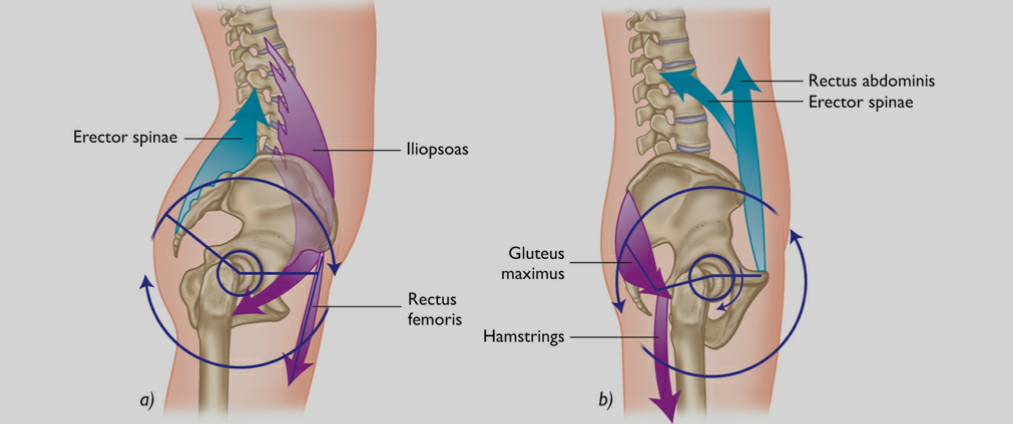The pelvis is comprised of three bones – the ilium, the ischium, & the pubic bone. The ilium is the large flat bone along the sides & back of the bowl. The two sides of the ilium are joined at the back as they meet the sacrum at the sacroiliac joint. The sacrum is largely responsible for your center of gravity. The sacroiliac joint is held upright by dense ligaments that secure the ilium to the sacrum. While technically a sliding joint, the SI joint doesn’t move very much, a few millimeters at most for those with hyper-mobile joints. The pubic bone is located at the center front of the pelvis, in the “pubic” area, & the ischium is located at the back of the pelvic bowl & is commonly referred to as your sit bone. The three bones come together at the acetabulum, where the large ball at the end of your femur comes into your hip joint. How well the femur & acetabulum fit together depend on a variety of anatomical factors that can allow for greater flexibility or stability in our practice such as length, angle, & size of the femur head.
Pelvic Floor
The levator ani muscle group, translated as “elevator of the anus”, is comprised of the pubococcygeal (PC) muscles, the iliococcygeus, the puborectalis, & the pubococcygeus. Together with the more superficial perineal muscles, these muscles comprise the lower diaphragm of the abdominal cavity & fill the circular opening at the bottom of the pelvic bowl. This web of fascia & muscle is what we commonly refer to in yoga as “the pelvic floor”.
Movements of the Pelvis
In addition to anterior & posterior pelvic tilt, movements associated with the pelvis are lateral pelvic tilt (where we lift one hip closer to the rib cage) & pelvic rotation. Lateral pelvic tilt creates lateral flexion in the spine & can be seen in triangle pose. Pelvic rotation is when one side of the pelvis rotates forward around the corresponding femur, as seen in revolved triangle pose of the back leg hip as it descends towards to floor.
The pelvis sits on top of the heads of the femurs. If the pelvis moves, there is a corresponding movement at the hip joint. Because the pelvis is connected to the sacrum and sits under the spine, movements of the pelvis also lead to movements in the sacrum or spine. When the pelvis moves, it does so at the hip joint and lumbar spine simultaneously.
David Keil Tweet






